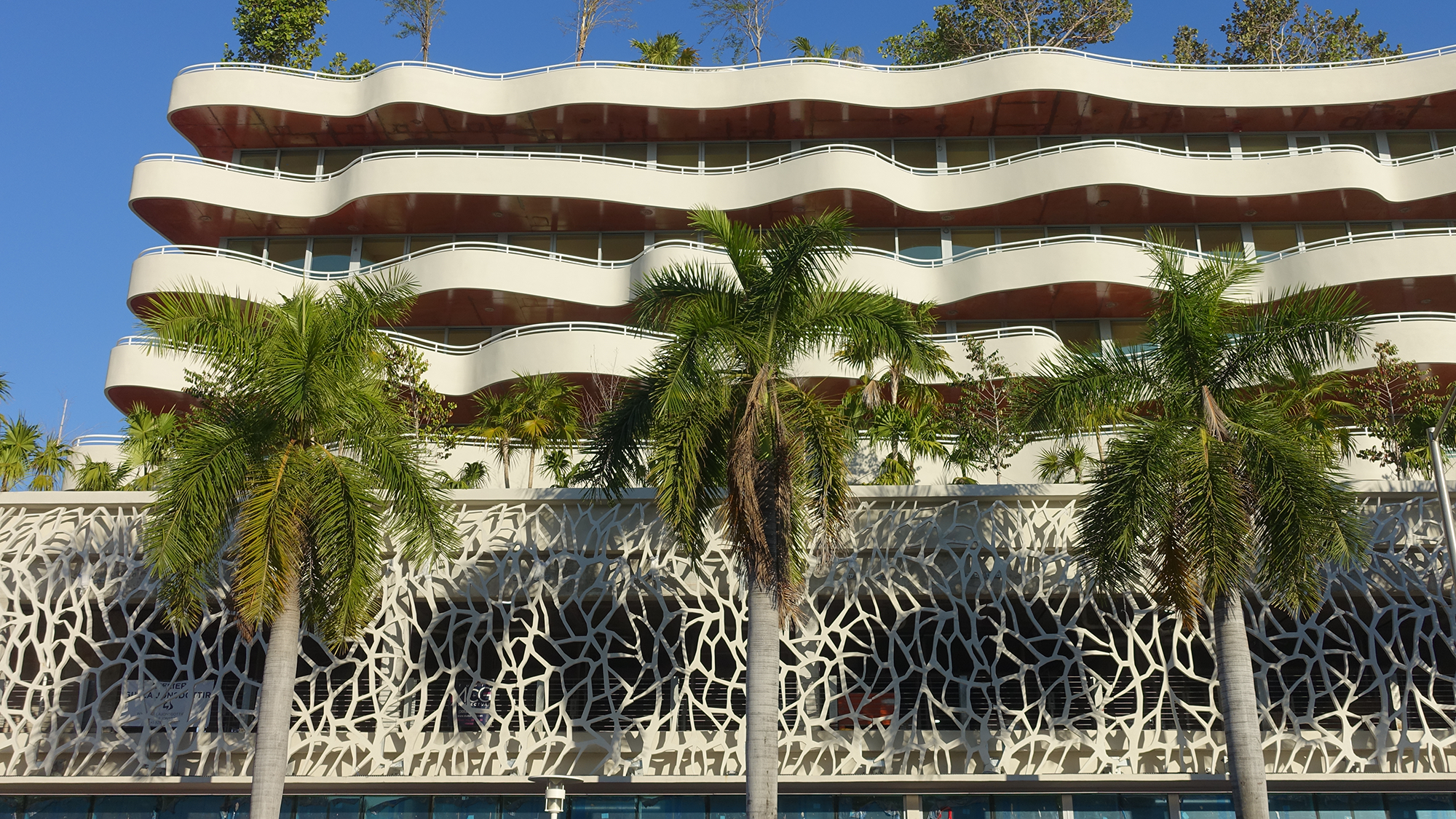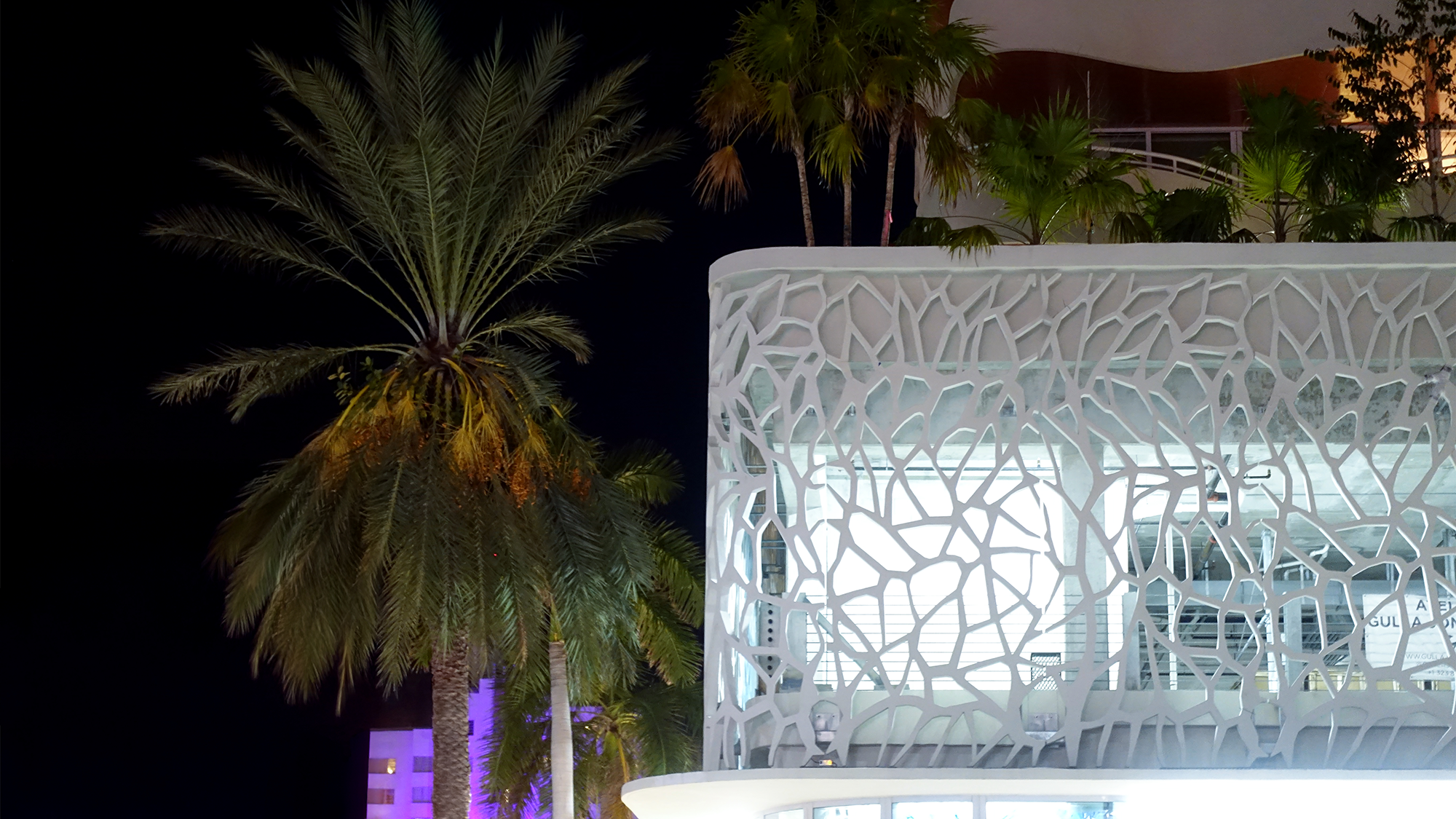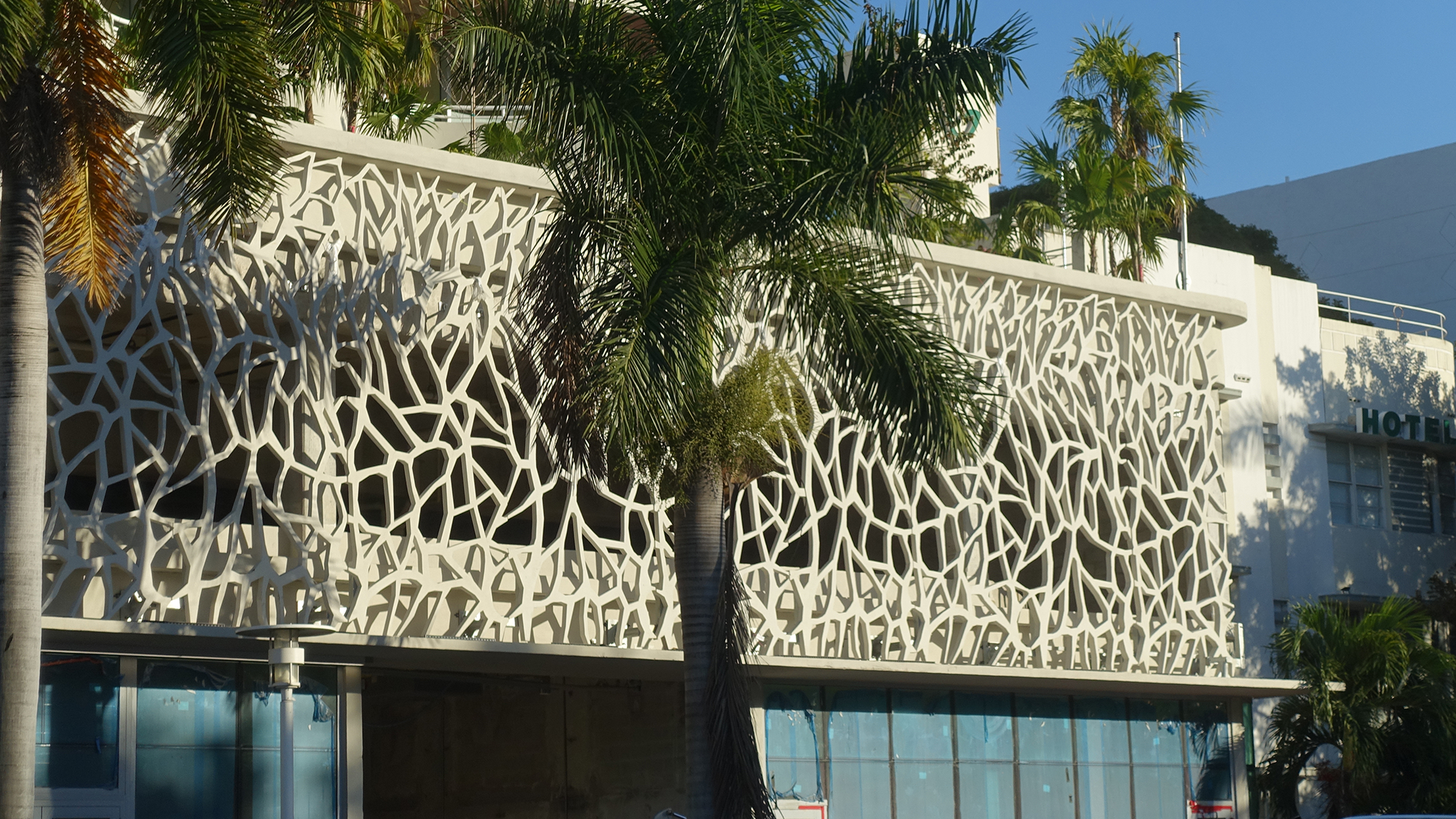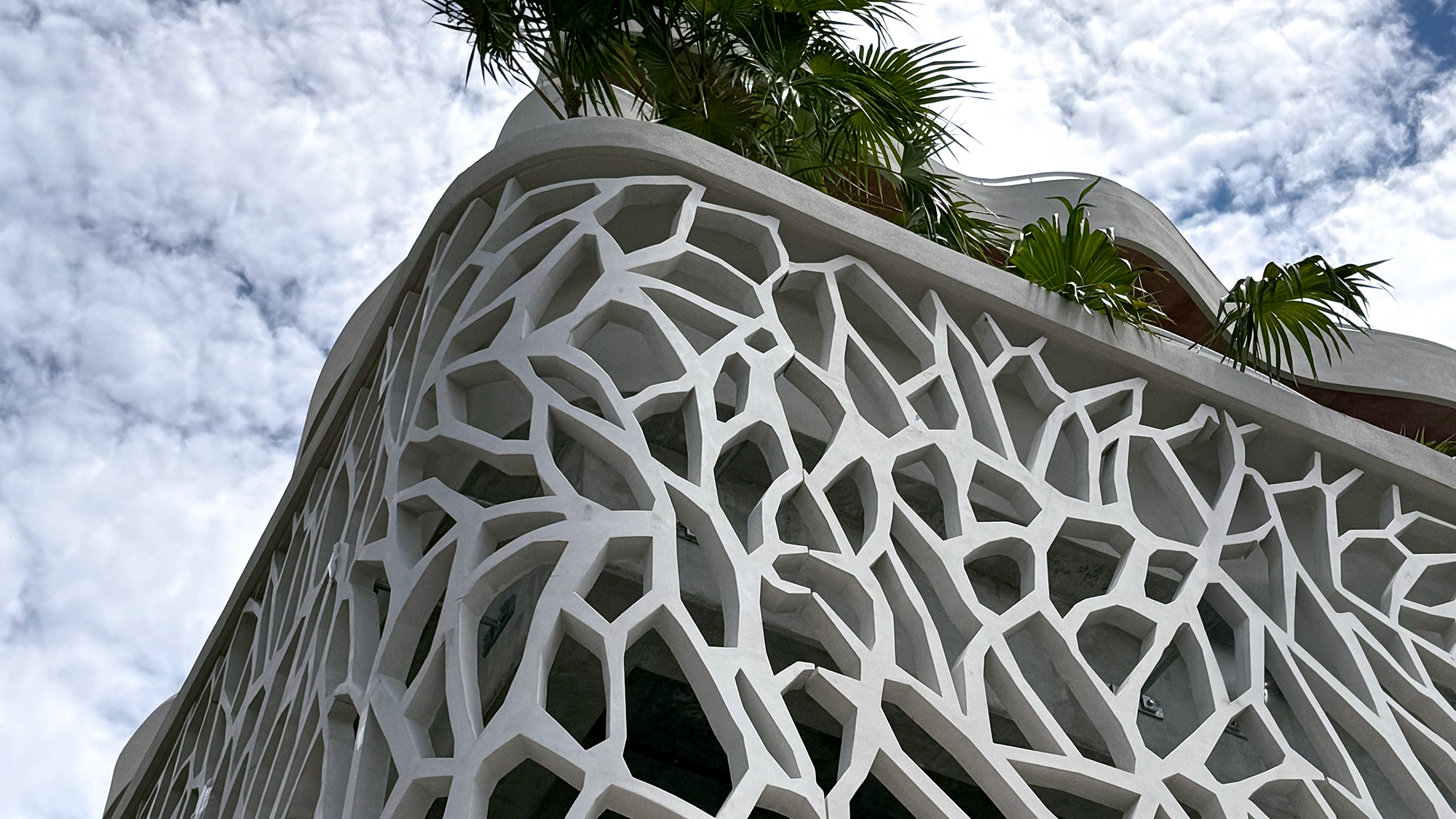LACE-LIKE BEAUTY, SKYSCRAPER STRENGTH: AMRIZE SHAPES THE THOMPSON HOTEL
 The Thompson Hotel in Symphony Park is an upscale boutique hotel located on Miami Beach in the heart of the Miami arts and entertainment scene. Photo courtesy of Hubert Chang, TYLin.
The Thompson Hotel in Symphony Park is an upscale boutique hotel located on Miami Beach in the heart of the Miami arts and entertainment scene. Photo courtesy of Hubert Chang, TYLin.
Tucked into the heart of Miami Beach’s Symphony Park, the Thompson Hotel is anything but ordinary. Spanning 83,000 square feet across eight levels, the property brings together 150 guest rooms, retail space, and a rooftop deck and bar—plus one standout feature. A sculptural screen wall wraps around the exterior, redefining what concrete can achieve and elevating the hotel’s architectural identity.
OUR AMBITION: BENDING WHAT’S POSSIBLE
 This elaborate installation pushes the boundaries of what’s possible with advanced materials, sustainability and digital fabrication. Photo courtesy of Hubert Chang, TYLin.
This elaborate installation pushes the boundaries of what’s possible with advanced materials, sustainability and digital fabrication. Photo courtesy of Hubert Chang, TYLin.
The project team, in partnership with Fine Concrete, set out to create more than just a feature wall. They envisioned a signature element that could function as both art and structure. It would combine elegance with durability, and be capable of withstanding Miami’s coastal climate while meeting ambitious architectural goals. The design called for a material that could bend expectations, allowing for bold curves and delicate profiles, while delivering long-term performance without compromise.
THE SOLUTION: ULTRA-HIGH PERFORMANCE, ULTRA-HIGH DESIGN
 Unique properties enable the design of thin, complex shapes and highly customized features, which are difficult or impossible to achieve with traditional concrete. Photo courtesy of Hubert Chang, TYLin.
Unique properties enable the design of thin, complex shapes and highly customized features, which are difficult or impossible to achieve with traditional concrete. Photo courtesy of Hubert Chang, TYLin.
Amrize supplied Ductal Ultra-High-Performance Concrete (UHPC) to bring the vision to life. This isn't your everyday concrete. It challenges assumptions of what precast concrete can do, fulfilling a design that forgoes steel reinforcement and is instead built with a fully modular system. With no bulky framing, the look leans into sleek, sculptural forms—allowing the architect to achieve just what he envisioned when he began searching for advanced materials that could bring complex shapes to life.
Ductal UHPC isn’t just beautiful—it’s also high-performing. Depending on the mix, UHPC can reach compressive strengths up to 29,000 psi, with flexural strengths up to 2,900 psi. That’s skyscraper strong. With PVA fibers reinforcing architectural applications, designers now have the freedom to create thinner, curvier, and bolder designs than ever before.
THE RESULTS: A NEW BENCHMARK FOR ARCHITECTURE
 UHPC is revolutionizing construction by allowing for longer spans in bridges, faster construction times, and more durable structures with reduced maintenance needs. Photo courtesy of Hubert Chang, TYLin.
UHPC is revolutionizing construction by allowing for longer spans in bridges, faster construction times, and more durable structures with reduced maintenance needs. Photo courtesy of Hubert Chang, TYLin.
Completed in early 2025, the Symphony Park installation demonstrates how UHPC enables builders to create more with less. More style, less bulk. More strength, less material—and way less compromise. It’s part of a larger shift happening across the construction industry toward faster builds, longer-lasting structures, and a more sustainable approach to design and material use.





























